It’s not my style to obsess about a perfect carpet of lawn but I do have standards for health that are just not being met by the hapless turf that tries to cover the dirt in front of my house. Do you struggle with an area of your lawn? Have you considered that maybe traditional grass isn’t the best option for the area?
My area suffers from overhanging pines, a combo of dry shade coupled with a few hours a day of blazing hot sun and moisture starved and highly acidic soil. Despite years and countless efforts to establish a healthy (chem-free) lawn – I’ve decided to stand down on the grass and go in other directions.
In the garden, I increasingly find myself taking inspiration from what the land and plants seem to want to do on their own. Instead of fighting to make things strictly my way, frequently I’m opting to amp up and encourage what wants to happen naturally.
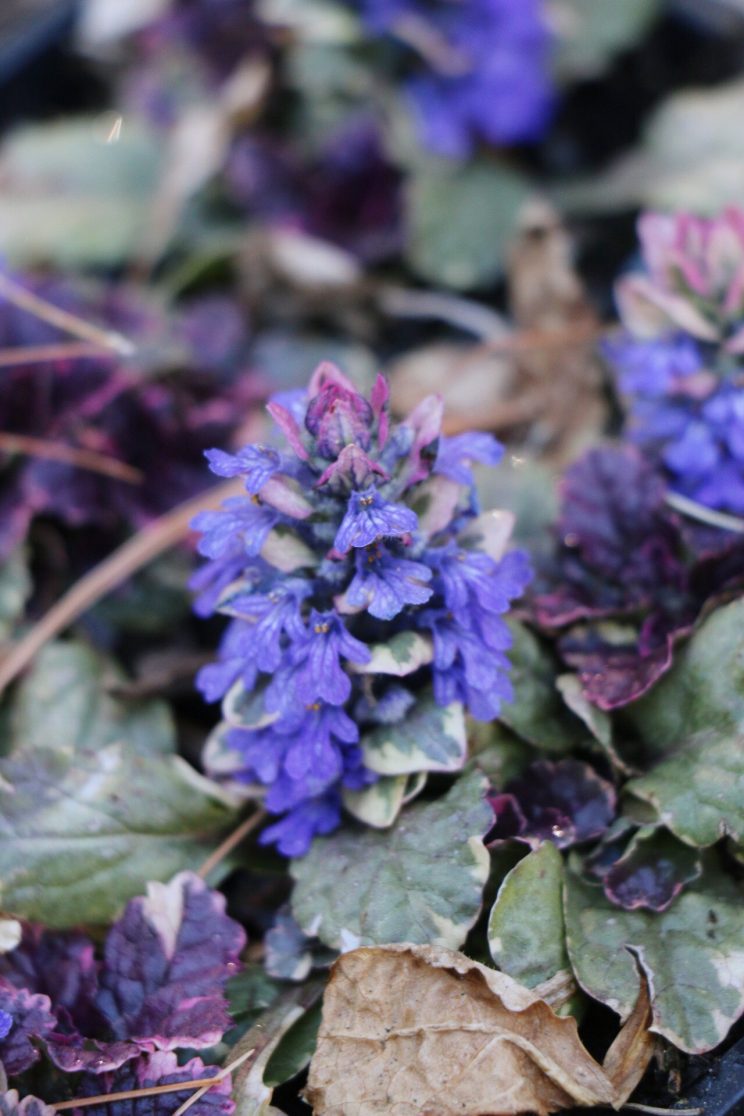
Throughout other lawn areas of my garden, huge patches of ajuga thrive. I’ve discovered that it is just as easy to grow (and often easier) than grass and it takes kindly to mowing. But if I miss a mow, it flushes in beautiful blooms of white, blue or purple, depending on the variety. I love it, and I’m not the only one. This varied version of a lawn is a happy home to countless chubby bumble bees that bobble around with a lively contingent of other pollinators.
This spring, in partnership with Gilmour, I’ve taken on the makeover of my struggling lawn to transform it into something much more special. With the help of their tools that work seamlessly to create a watering system, my outdoor space looks better than ever.
The first step in the project was to remove a giant shrub, cut out a much larger garden bed (that will increase in time) and plant a new Japanese maple as a focal point. You can read about that here.
I’ve taken a two pronged approach to phase out the grass. Part of the area will be cut out and replaced with an ever increasing bed full of drifted Oudolf inspired planting and in the other part, I’ve been introducing other plants that will do the work for me and will slowly take over the weak grass.
Despite the look of these lush early spring pictures (wherein the grass actually looks kind of nice) – the truth is, the whole area will soon be dusty and brown as the violas die away in the summer heat and the spring rain dries up.
It is worth nothing that I don’t use an in-ground irrigation system in my garden. It is partially an environmental choice, partially a cost choice and partially a practicality of living on a well water. I water things when they are new and need help establishing, but after that, plants have to be able to be able to hold their own of they are going to stay around.
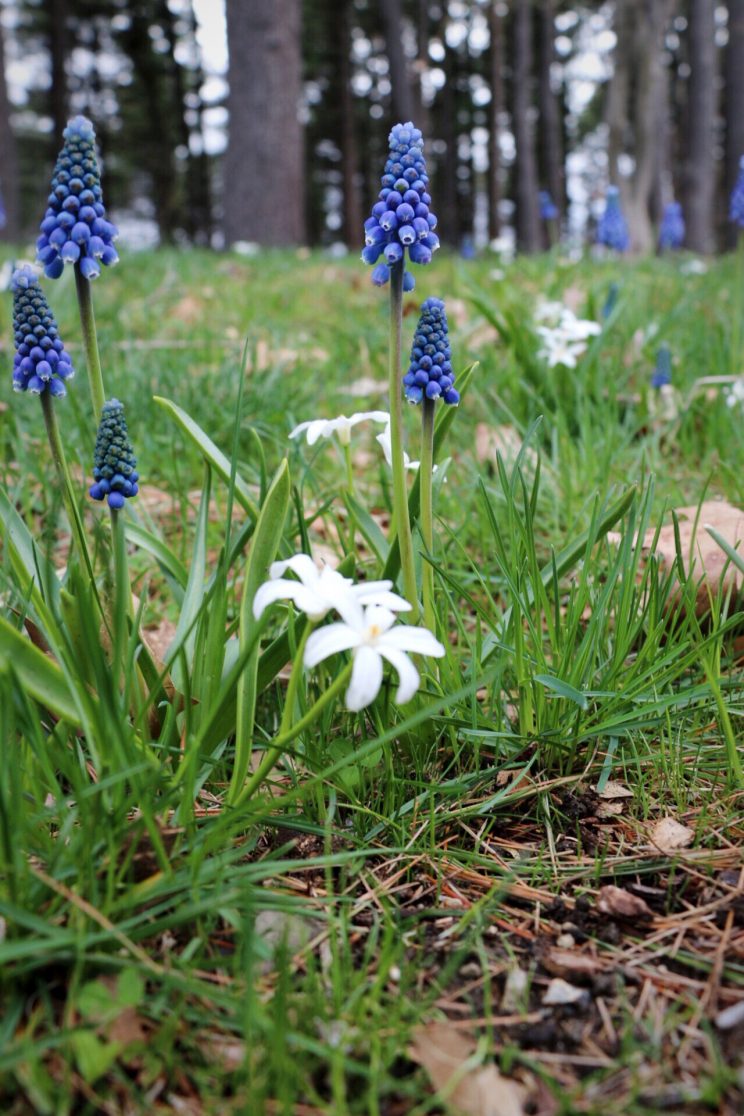
Step one started last fall when I lifted clumps of grass and underplanted with a selection of early spring bulbs (Chionodoxa luciliae alba and Muscari Aucheri Blue Magic). The Chionodoxa will naturalize and increasingly fill the area. I was pleased to see my drifts successfully transform the area early, but if I had to do it again, I think I’d have clustered the muscari closer together since they come in later and now I am having to wait for them to die back a bit before I can begin to mow.
I am also introducing ajuga. Through experience, I know that as the thick matts grow together, the grass will die away. It will take a few years – but it is far easier than digging out all the grass.
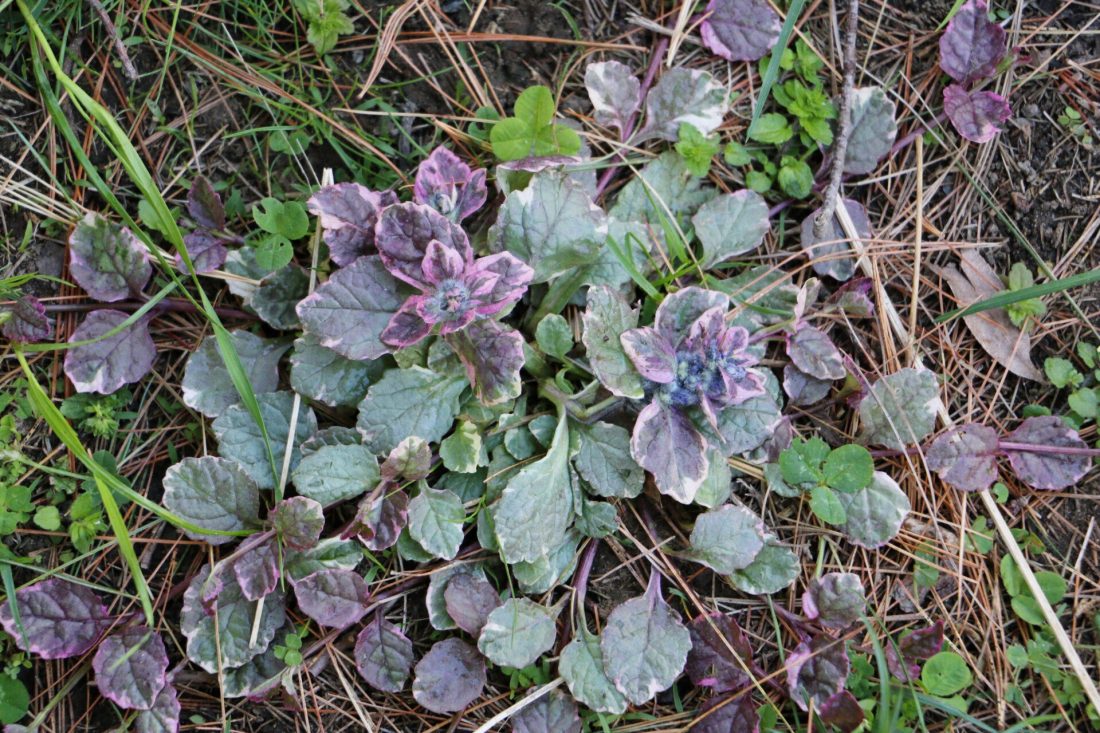
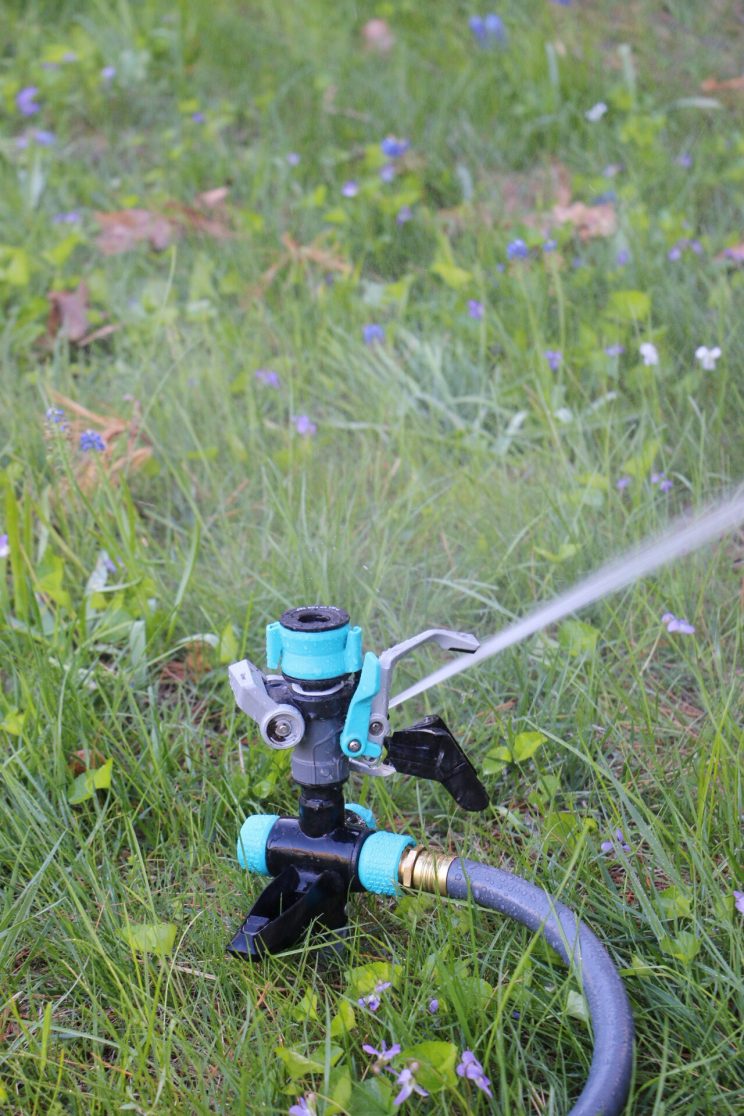
A couple of flats of small ajuga plants spread out evenly and planted through the existing grass area will quickly take hold if watered in and cared for while they establish their root systems. These roots will eventually be what chokes out the weak grass. I use the Gilmour Circular Sprinkler with a spike base to get water to my new lawn plants. The shape control feature made customizing the coverage area as simple as ever, and I have to say, the on/off knob on the base of the sprinkler was quite handy for me to get this shot without getting wet!
Step two has taken a more traditional route that involves a lot more physical effort. I ripped out the grass to make way for drifts of perennials.
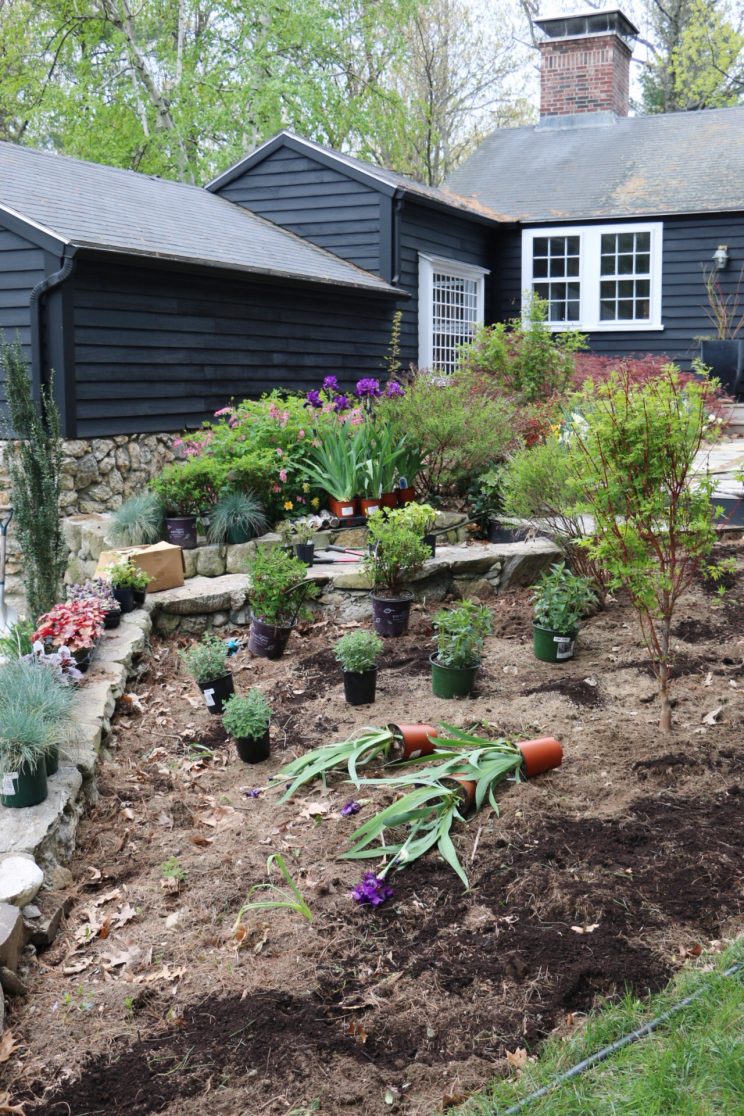
The project is ongoing since some of the plants I want to include aren’t yet available at the nursery and still others I am planting from seed. That is why large patches are being held by mulch – for now.
When I’m planting a large area like this, I start with sprinkling compost over the top of the whole area. This way, as I dig in the plants, the compost gets worked in naturally.
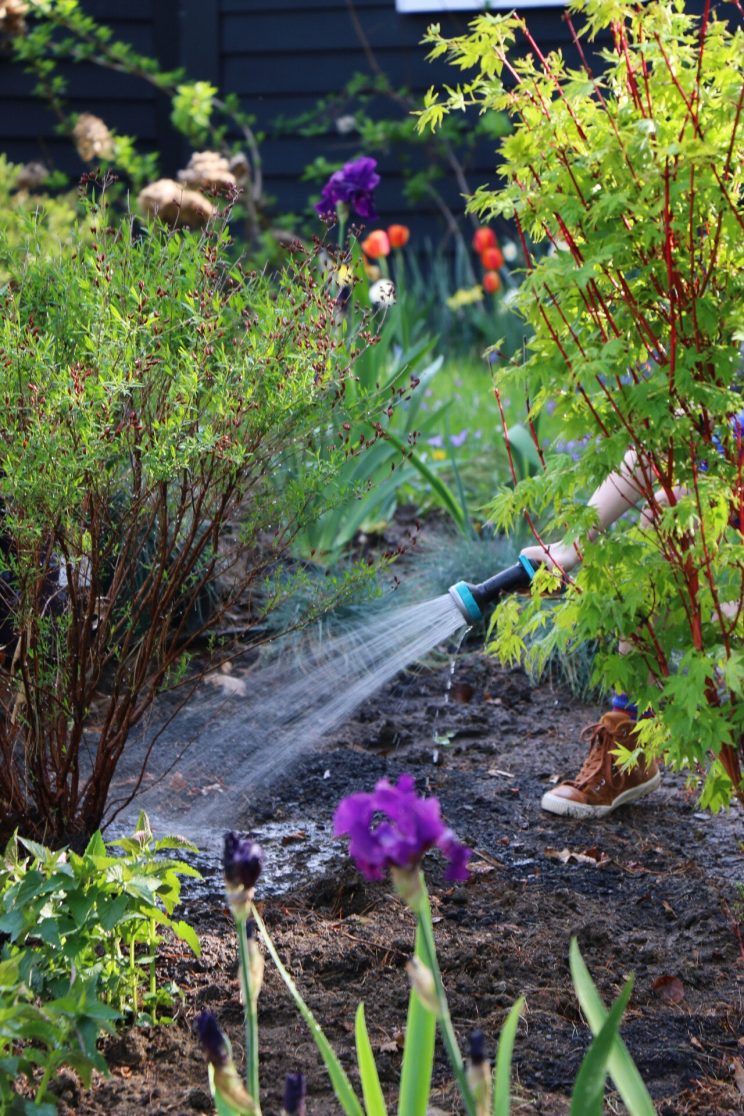
My son lent me a helping hand to water in the plants as I finished putting them in the ground. As he worked he worried that he might be over watering – do you ever wonder that?
To be honest, it’s hard to over water when you are installing plants. Unless it is a cactus or a succulent garden, most plants need lots of water when they are being transplanted and it is unlikely that you will overdo it. Moving causes plants stress, as does lack of water – making sure that water is abundant and plentiful helps them to cope so that they can settle and thrive quickly. I’ve used the Gilmour Thumb Control Nozzle with Swivel Connect that features eight different spray patterns to ensure each plant receives the proper amount of water. The swivel connect allows the nozzle to pivot without twisting the hose, reducing the likelihood of getting hose kinks.
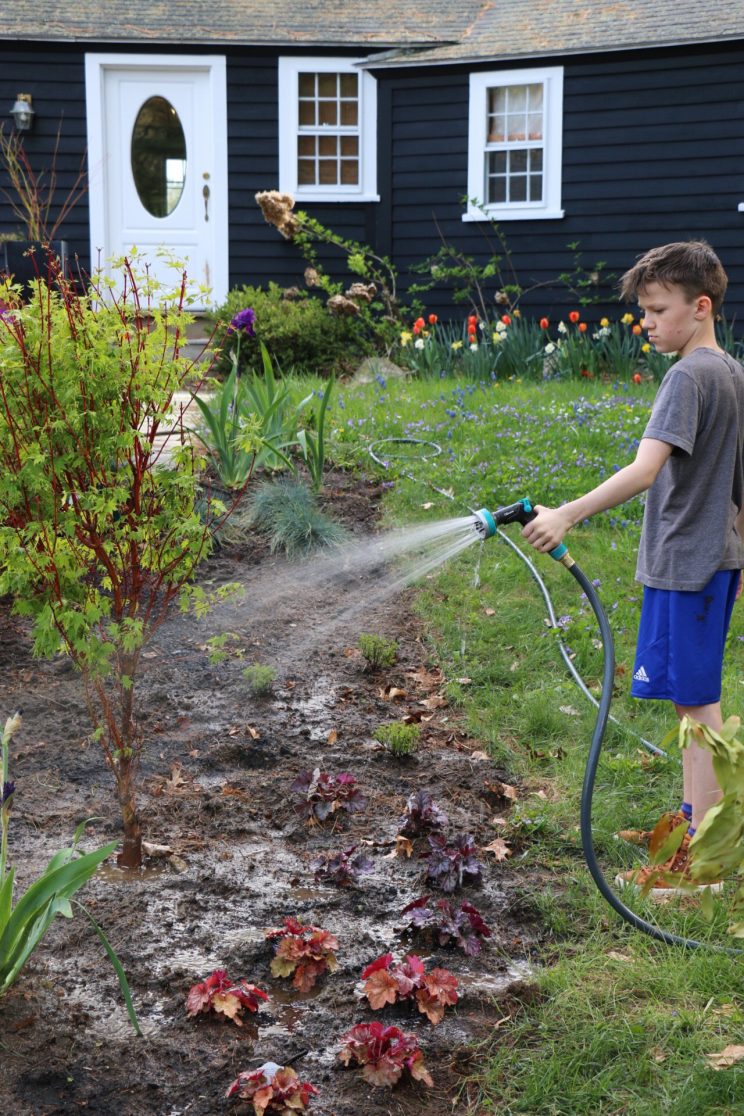
I generally water at least four times when installing perennials. First, everything is well watered before I take it out of its container.
Second – I also tend to water the empty bed before I get started.
Third – Then when everything is in, I water it at least once before mulching.
And (fourth) after the mulch is down, I water again. The mulch will help seal in the moisture below, but watering over the top of the mulch will help the mulch to settle and create the weed starving, water retaining crust that your new plants need.
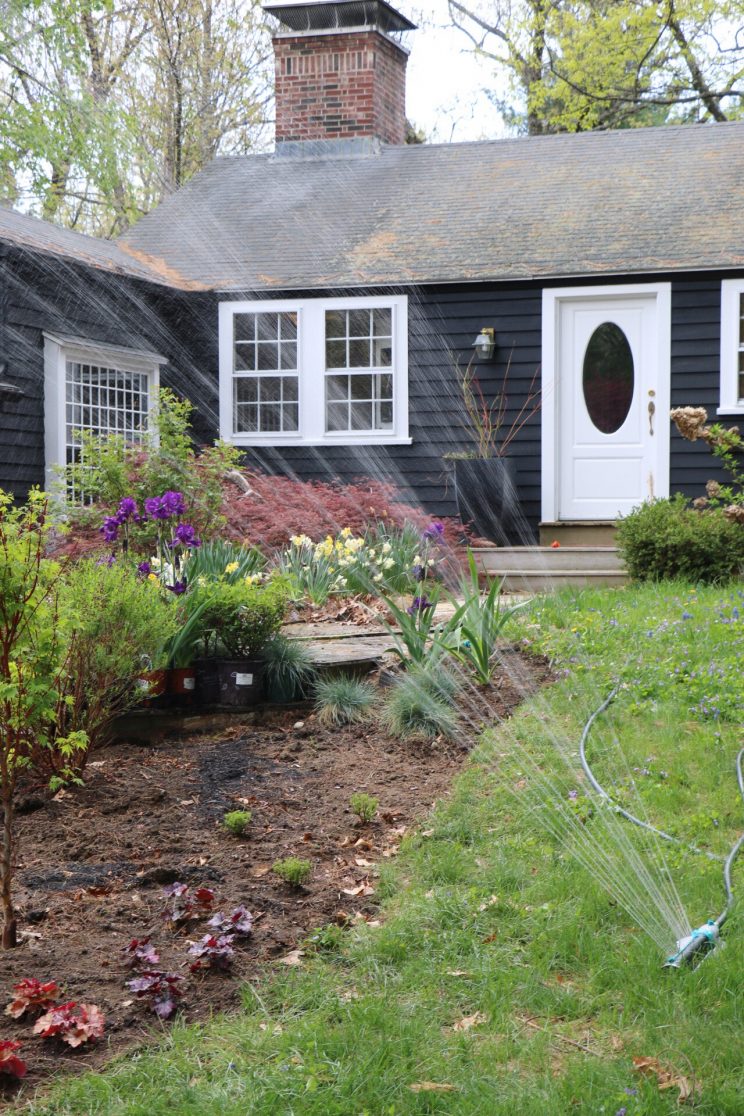
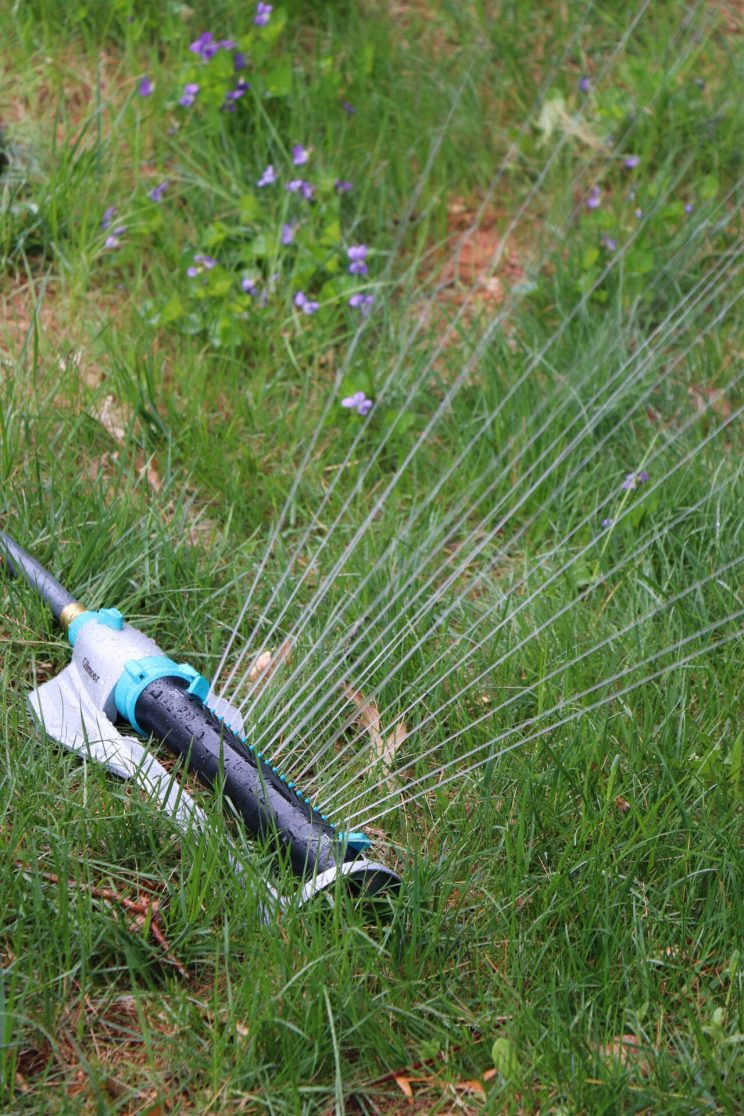
Who remembers those banana yellow sprinklers from the 70’s and 80’s? I remember watching my mom and the other neighbor moms fuss with those – always getting wet. They were so complicated to adjust and it seems like everyone watered a lot of sidewalk.
This Gilmour Rectangular Sprinkler is so easy to adjust and has a huge range. The tabs on the side adjust the width and the rings at the end make it simple to tweak the range of the arch. It is perfect for the gentle watering needed for newly planted perennials and seeded areas.

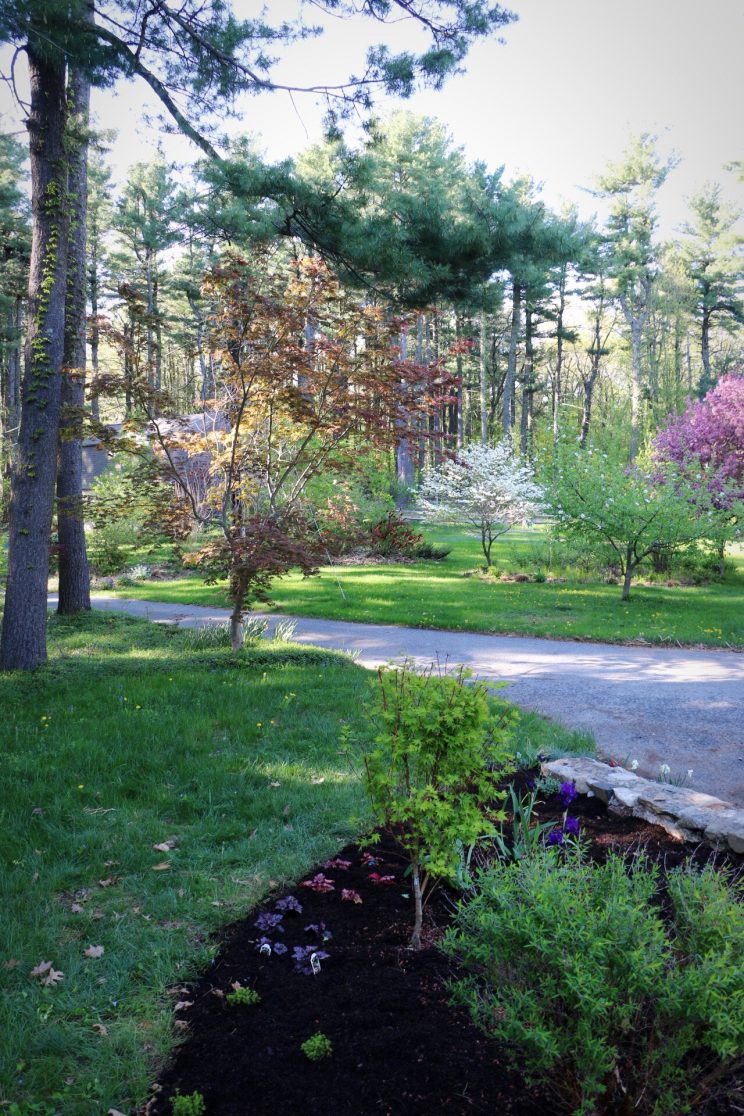
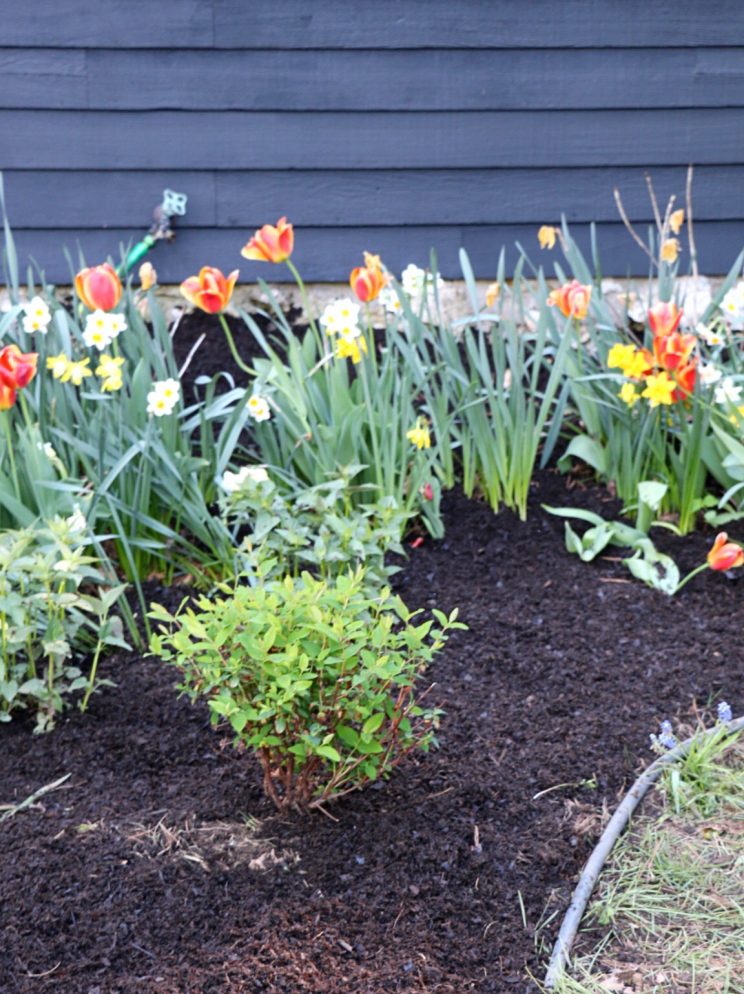
I like to use hoses to help me establish bed lines. In this case, I am not taking the time to really cut a nice edge since I am ultimately going to be removing even more grass. But even for now, a hose like the Gilmour Flexogen Super Duty Hose is helping me make a nicer temporary line with the mulch.

This was such a great year for tulips and hellebores. The cool late spring we have had here in New England was perfect for them and I thought you would enjoy them getting a little camera love as much as I enjoyed shooting.
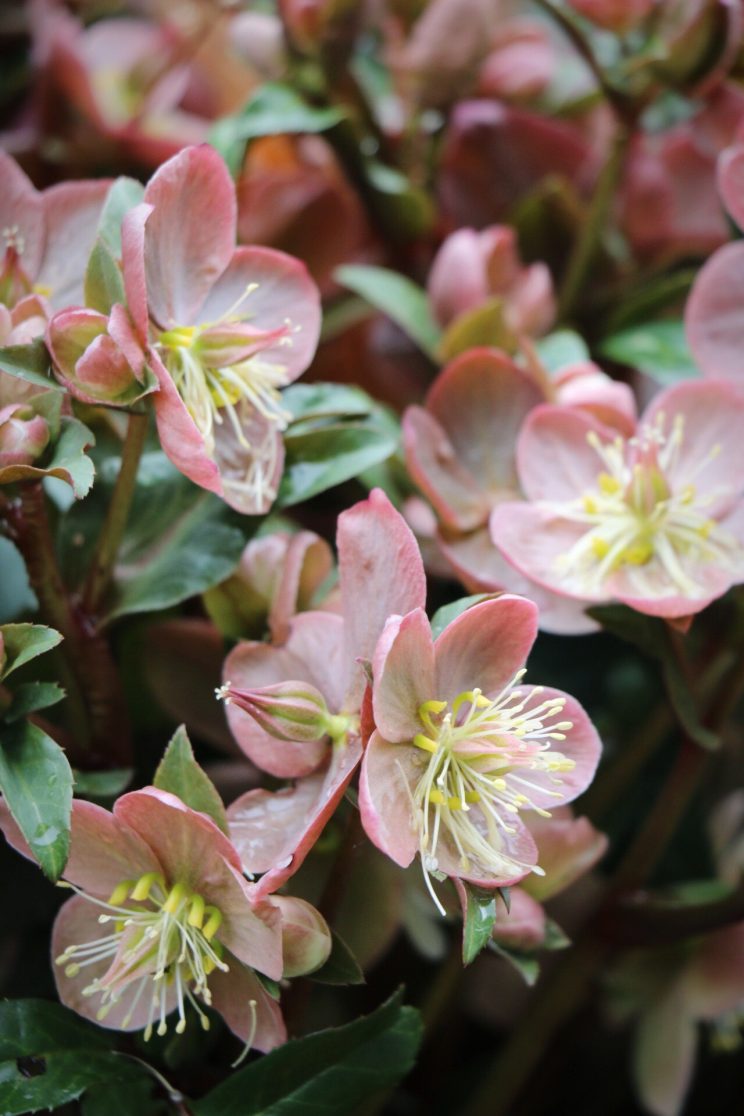
The irises are my new favorites. They smell so nice and give me a strong hit of purple in the early spring. I’ve designed this whole area to have shades of purple blooms flush throughout the summer and into the fall. So far so good. Later, the stars will be swaths of catmint, agastache, and fall asters. Yellow accents will flush through as well with blooms on St John’s Wort, potentilla, yellow roses and coneflowers.
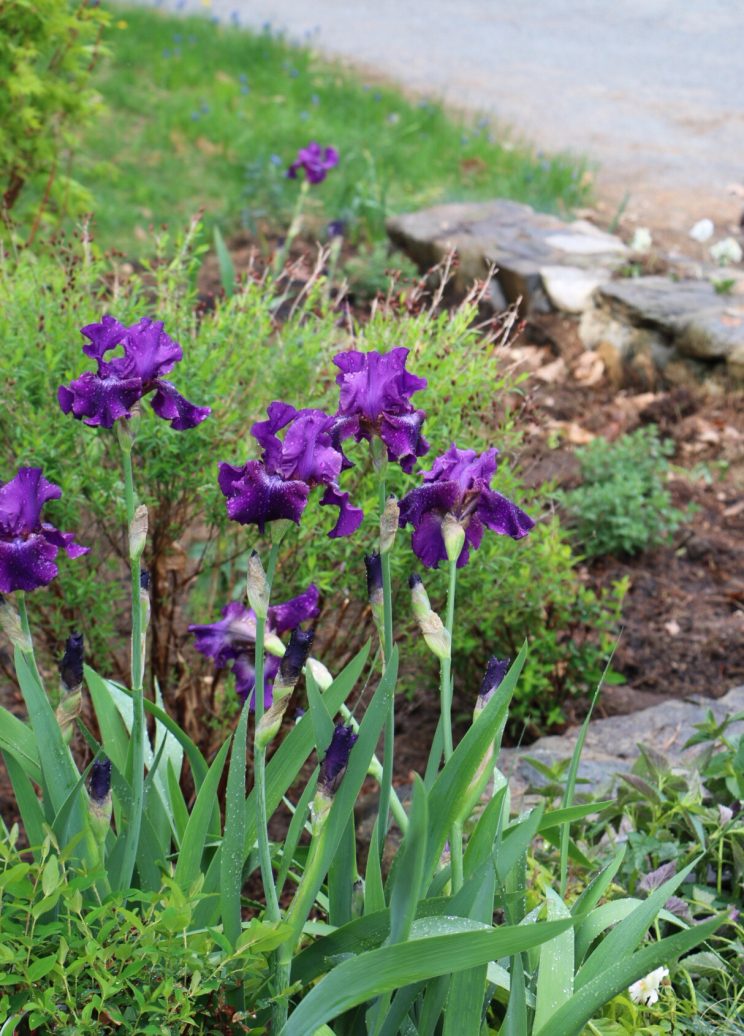
There is more to come, and things have a bit of growing to do – but I think the ‘after’ shot is a huge improvement don’t you?

This post is sponsored by Gilmour.
+comments+